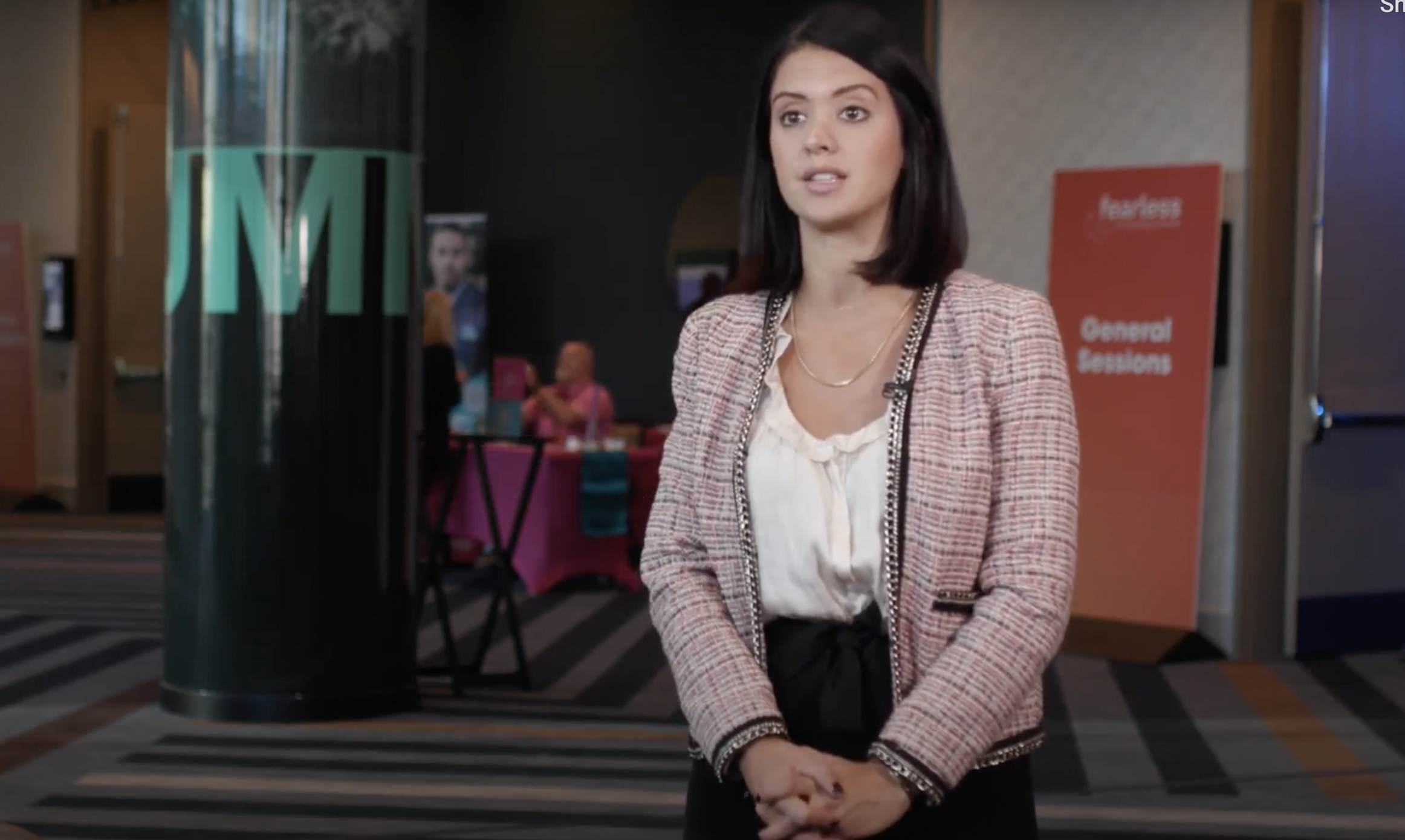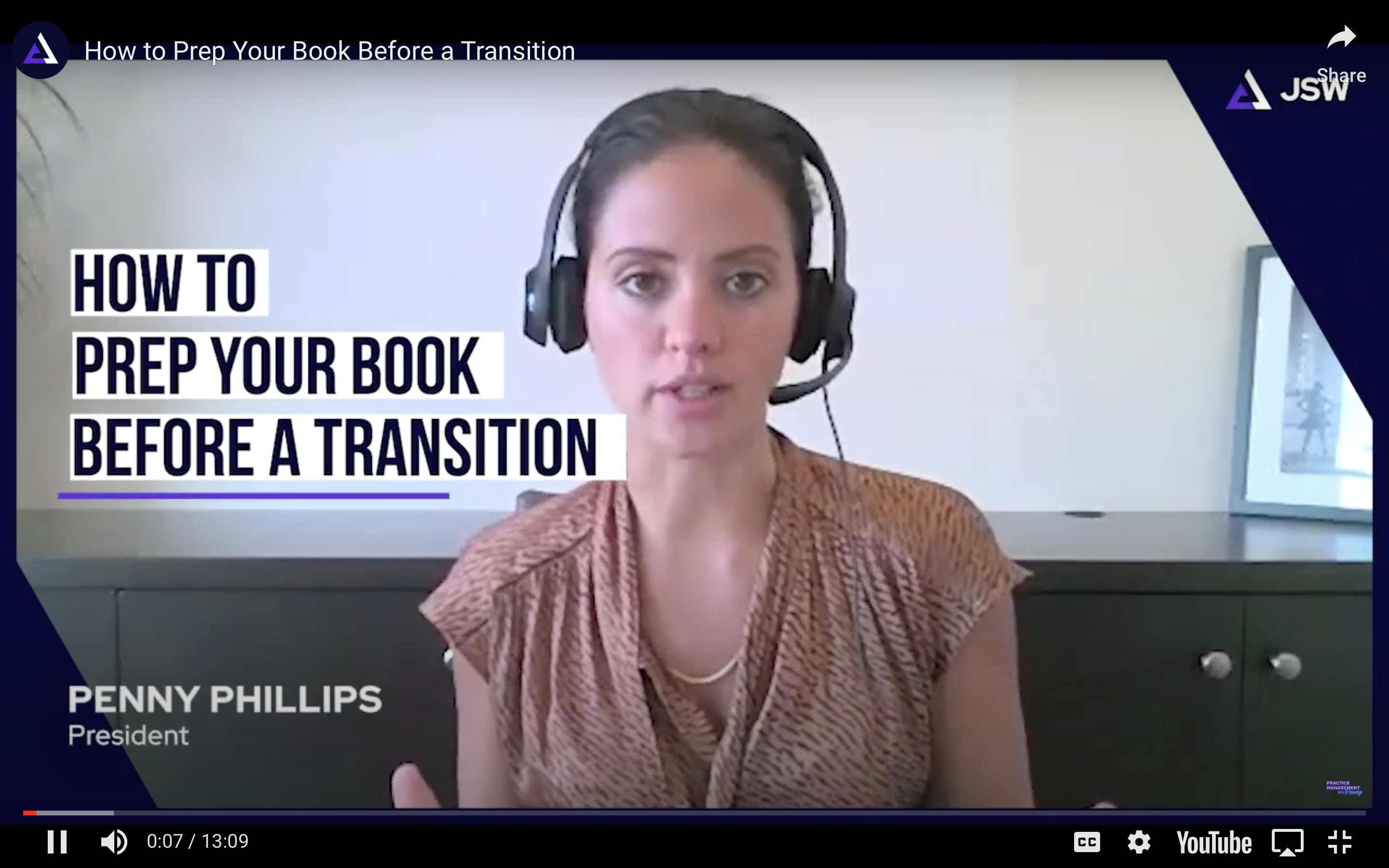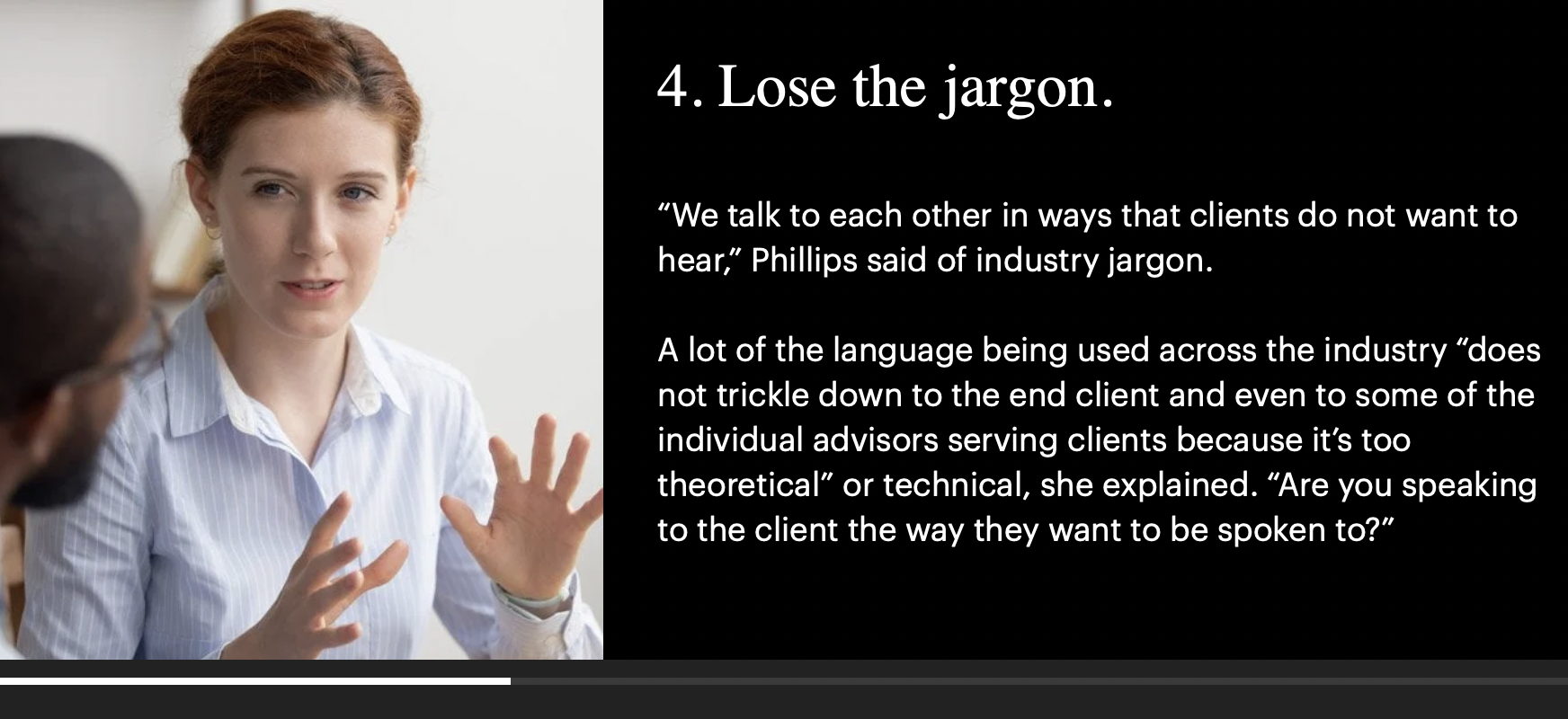

Why COIs Don’t Refer Business
To build powerful—and reciprocal—relationships with centers of influence, be highly intentional about who you are choosing to partner with, what information you’re sharing with them and how you’re nurturing the relationship.It’s possible you’ve found yourself in one of two scenarios as it relates to the centers of influence (COIs) in your network. Perhaps you’ve had a casual professional relationship with an estate attorney or accountant for several years. You may have had one or two conversations with them about referring business to one another. Over this time, you’ve provided them with a consistent stream of referrals, and they have provided no one in return. Or you’ve had a relationship with a COI who has consistently referred business, but most of the referrals don’t fit your ideal client type. To build powerful—and reciprocal—relationships with COIs, you must be highly intentional about who you are choosing to partner with, what information you’re sharing with them and how you’re nurturing the relationship. Here are three ideas that can help you get off to a fresh start with a new or existing COI. Explain what you do in a way that is memorable ... and makes sense.One reason why COIs don’t refer business to advisors is simply because they don’t know how and when to leverage the financial advisor. It is easy for an advisor to refer business to an attorney or accountant because they offer services that fit specific needs that are easy to identify (e.g., to file taxes, to handle an estate issue, to get divorced, etc.) On the other hand, the services of financial advisory firms are not always easily understood. To differentiate the modern financial advisors from the stockbrokers of yesteryear, the industry has been using the terms “holistic wealth management” and “comprehensive financial planning” to describe what advisors do. The problem is those terms are confusing and do little to educate people on the client needs advisors help solve for. Keeping this in mind, when explaining your services to a COI, do not use industry jargon. Instead use language that closely aligns with the way an ideal client might be articulating their needs and challenges to another professional. Here are a few examples: “We help people who are about to sell a business save money in taxes and ultimately make sure the money they receive lasts for their retirement and their kids’ retirement.” We invest money for people and help them understand how much more they’ll need—and what steps they’ll need to take moving forward—to retire when they want. We help people ensure that they’re maximizing their retirement accounts and saving enough for retirement and for their estate planning goals. Make sure that whatever language you are using matches the language on your website and in your marketing materials. Consider creating a one-pager that clearly explains how you help clients. Include a brief case study or success story as well and make the PDF downloadable on your site and below your email signature. Have a direct and intentional conversation.Another common reason potential COIs don’t refer business is because they’ve never been directly asked. When was the last time you had a conversation with an attorney or accountant in your network, and directly asked them if they’d be open to referring business to your firm? Whether you’ve had that conversation in the past, or never at all, prepare to have that conversation now. If you are worried about coming off “salesy,” shift your thinking. You play a critical role in the life of each family you serve. There is nothing salesy or wrong about telling others that you want to help more people secure their retirement and master their financial situation. Remember that the professionals you are speaking to are in the same position as you in terms of needing to grow their business through referrals and introductions. When you are speaking with the COI, make sure you clearly articulate the following: That you have had great success over the past few years and are looking to deepen your reach and serve more families, and focus more attention on a few niche groups of clients (i.e., the clientele that you and they both serve). That you are looking to build a small network of trusted professionals who can serve as your go-to resources for your top clients. That you are only looking to build this network with professionals who can see themselves working with you and referring you business too. That you are looking to bring on a specific number of new households each year from your trusted partners so that you can maintain the boutique, family-oriented feel of your firm. That you would be happy to create and deliver a financial plan for them, free of charge, so that they can fully understand the value of what you do. Make sure when you are having this conversation you are also clearly explaining the types of clients you work with and the ways they would be able to leverage your work during their engagements with similar clients. Not every “COI” is actually a COI.Just because someone fits the traditional professional profile of a COI and has worked with clients of yours in the past, doesn’t mean they are going to be an ideal referral source for you. If you refer business to someone consistently, and you have had many conversations with them about who you serve, and they are not referring anyone in return, it’s time to stop considering them a COI. A COI, by definition, is a person who has access to and influence within your ideal client circle and has the power to refer, promote and advocate for you. If you are realizing that perhaps you don’t have any strong COIs right now, consider the professionals who your best clients are currently working with. Conduct an audit of your best clients’ accountants, attorneys, real estate agents etc. Ask for introductions to them. Be open and transparent with clients, letting them know that you are looking to add professionals to your network and would be interested in building relationships with their go-to people. Additionally, start thinking outside the box about who you consider to be a COI. Consider the people—both personally and professionally—who have influence over your ideal clients. And especially those who have influence over your ideal clients during a time of transition or high emotion, such as when money is in motion, or when clients need to confide in someone over a difficult decision. There are lots of people who might fit the bill. Review the following list and add some examples of your own: Mortgage brokers Real estate brokers Business or career coaches Doctors Local politicians House of worship leaders Funeral home directors Divorce attorneys Event planners The key when building relationships with these individuals is to teach them how to find opportunities to refer you For example, wedding planners are in the business of helping clients plan large-scale events that typically cost a significant amount of money. They routinely are in conversations with clients about their budgets. A savvy, influential event planner with strong communication skills might easily be able to say the following to a client: “I have a friend who is an awesome financial planner and would be really helpful to the two of you as you continue to think about your budget and merging your finances before the wedding. Do you want an introduction?” On a final note, once you have identified your potential COIs and have properly set expectations with them, start treating them like an A+ client. Set reminders for yourself to call and check in “randomly” each month. Provide them with value-add material throughout the year. Co-host events with them. Spend time with them just like you would your very best clients. In no time you will find that all you really needed was one or two strong connections to help you move the needle. Read on Wealth Management: Why COIs Don’t Refer Business[/et_pb_text][/et_pb_column]

Common Mistakes RIAs Make Hiring and Retaining Next-Gen Advisors
Set expectations, understand it takes time and be prepared for anything. The process of integrating a next-gen advisor into a practice is challenging and time consuming yet completely necessary for any advisor who wants to avoid hitting the proverbial capacity ceiling and wants an in-house succession plan. Advisors should expect to spend at least the first year just getting the new advisor acclimated to the practice and the role; helping them with their language and approach, teaching them about the clients you serve, and ultimately helping them co-create and execute a plan for what success looks like in their role. Here, I explore the most common mistakes I have seen advisors make when onboarding and developing young advisors and provide examples for how to avoid them. Looking for the Unicorn Every advisor wants to hire a young worker who can come into the practice and quickly generate revenue for the practice, either by cultivating opportunities in the book of business or by finding new clients. This type of hire is extremely rare, not just because it takes a certain amount of skill, experience and talent to be a producer, but because many young advisors entering the business today want to advise without the responsibility of growing the business. Advisors need to reset their own expectations about the role they are looking to fill. Rather than looking for another “producer,” advisors should look to bring in someone who can slowly and sustainably create capacity for them over time, first by taking over meeting prep and follow up, and eventually by delivering advice and handling client relationships. It is much easier (and arguably more important) to train someone to preserve current revenue for you, so you can grow the business, than it is to train someone to create new revenue. Not Setting Proper Expectations Before a new advisor starts at your firm, it’s important they understand how to measure success within their role. Within the first month, they should be able to answer the following questions: How will I know I have successfully integrated into the practice? An example might include “being able to clearly articulate the firm's value proposition” or “being able to put together a review meeting agenda for a top client meeting.” What should I be aiming to achieve on an ongoing basis in my role? An example might be “creating capacity for the senior advisor by handling all review prep and follow up” or “building rapport with current clients by texting, emailing or calling all A+ clients once a month to check in.” How will I know if I have had a successful week? An example might be "clients are proactively reaching out to me instead of the senior advisor.” How will I know if I am progressing in my role? An example might be “being able to handle client service requests without intervention from the senior advisor.” Expectation-setting doesn’t end at onboarding, however. As the next-gen advisor develops, it will be critical to set expectations about how you are handing off work and relationships to them: what language you will use to introduce them to clients, how you will make the hand-off for certain tasks, etc. Clear expectations help foster a culture of total transparency and mutual accountability between you, the new hire and the entire team. Underestimating How Long and How Much it Takes How long does it take to develop a next gen advisor into a self-sufficient advisor who can manage lower tier relationships without your support? The honest answer is it depends, but you must be willing to play the long (years) game and you must be willing to train them. Assuming you have the right person in the role, there are certain things you can do to speed up the development process. The first is introducing a three-phase approach to training: Phase 1: Shadowing lead advisors in as many meetings and conversations as possible. You should be debriefing after each conversation and asking the new hire questions about what they learned and observed. Phase 2: Practicing skills in a controlled environment. An example of this might be forwarding them a client email and coaching them on how to respond. Stay in the background while providing feedback and positive reinforcement along the way. Phase 3: Leading initiatives. Eventually, the new hire will be ready to work with a lower tier household on their own, or even handle a new prospect discussion. The time it takes to move through each phase is less important than knowing when to know its right to graduate to the next phase. Co-create the key metrics for each phase with the new hire. These may include things like: Provided great ideas for how they would’ve added value in a meeting they shadowed. Asked pointed questions and as able to pivot during the meeting rather than just “sticking to the agenda.” Clients are comfortable asking the hire a question directly. If you are comfortable with the key metrics and have proper expectations about what development should look like, you will find yourself more quickly able to identify whether a new hire is or is not developing. Ignoring Generational Differences There are very specific differences between baby boomer advisors and Gen Y and Z advisors. While there are exceptions, especially with first-generation millennials and Gen Z, the younger generations have grown up in a participation-trophy, positive reinforcement-oriented society. Their confidence has been built on the number of “likes” they get on social media. They’ve grown accustomed to getting recognized for showing up, but not necessarily for outperforming. They want to have an impact on the world and want to feel like they are part of something bigger than themselves. All of this must be considered when leading next-gen hires. Always aim to: Provide positive reinforcement instead of negative reinforcement. Foster a culture of collaboration and teamwork. Constantly remind the team of the greater mission and vision. On a final note, its important to always “expect the unexpected.” There are many advisors who have successfully developed their successor, only to realize that he or she doesn’t actually want to be a successor. I am finding this trend is growing more and more common in our industry. The young advisor, now a Gen Xer, loves their job and loves advising, but doesn’t have the desire or risk-appetite to buy-out the senior advisor and “take over the business.” Meet quarterly with your younger advisors—and everyone on your team—and stay in tune with what they want personally and professionally, so there are no surprises for you, or for them in the end.

How to Get Employees to Lead Themselves

Four Common Practice Management Mistakes to Avoid
As advisors scale and grow their business, they constantly have to toggle between strategic, big picture thinking and tactical doing.

How to Immediately Drum Up New Business
Three tried-and-true best practices to get more clients.

The Most Important Decision Advisors Should be Weighing About Their Practices
Advisorpedia interviewed Penny Phillips, Co-founder & President of Journey Strategic Wealth, at the Riskalyze Fearless Investing Conference in October 2022.

How to Focus Your Marketing Efforts
As conference season comes to a close, avoid paralysis by analysis by taking concrete action on marketing your practice.

Transitions, Transactions & Promotions: SageView, Journey Strategic Wealth Acquire Women-Led Practices
A Huge New Hybrid RIA Emerges, Women-Led Firms Conduct Strategic M&A And Three Big Firms Make Executive Promotions From Within. Journey Strategic Wealth Brings On Three Advisory Teams With $210 Million In Assets. Woman-led Journey Strategic Wealth (JSW) is adding three teams with six advisors, representing a combined $210 million in new AUM for the boutique financial advisory firm. Richmond, Virginia-based Mark Newfield, Seattle-based Laurie Adams and traveling advisor Kathleen Barlow bring their practices to JSW, which itself has offices in Summit, New Jersey, and Alamo, California. Newfield’s team also includes advisor Angela Lessor, financial planner Melissa Clark and operations leader Danielle Handshaw.

Penny Phillips, Dave Welling, Jason Wenk: How to Serve More Clients, Better
While financial advisors face serious business challenges, these tough issues also serve as opportunities for them to reshape their firms and the industry, according to several RIA leaders who spoke Monday during a panel discussion at the Future Proof conference in Huntington Beach, California.
